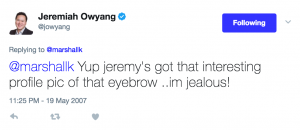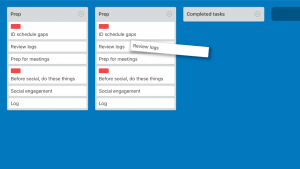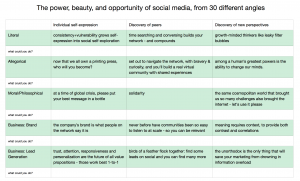Influencer engagement is something you want to do over time. No experience I’ve had over the years illustrates that better than the incredibly valuable relationship I’ve built with entrepreneur, serial innovator, and mega thought leader Jeremiah Owyang.
It was 10 years ago today that Jeremiah first replied to me on Twitter. 🙂
Happenstance twitter searching some time ago let me know that it was May 19th, 2007 that happened – and when I saw that date, I made a note on my calendar! I want to take this opportunity to thank Jeremiah for 10 years of high-value blogging, tweeting, public risk taking, inspiration and friendship.
That first exchange was a silly one, it was a late night chat about Twitter avatars, apparently. I can’t find the tweet this was a reply to, I think I may have deleted it! 
I have no idea what he’s talking about.
We had met in person a few weeks prior, when I started a Twitter account just for SXSW (I was going to delete it immediately afterwords!) and found out about the annual Laughing Squid party. But it was May 19th that we tweeted first, according to Twitter’s awesome archive search.
Since that day…
Blogging for career development
I interviewed Jeremiah and wrote a big blog post in 2009 titled Why Jeremiah Owyang Is Leaving Forrester Research. I reread that post last week and rediscovered some great tips and perspective in it, including the following:
Jeremiah Owyang came to Forrester as a blogger and he leaves even stronger in that role. Despite a grueling travel schedule, a rigorous report writing regimen and constant briefings with companies large and small, he’s one of the most prolific leading voices in the social media blogosphere.
“My use of social media and my career advancement are intrinsically tied,†Owyang told us by phone today. “I started my blog as a practitioner at Hitachi. I budget time every morning to read and blog. I do that before I check my personal email or work email. I believe you have to pay yourself first. When you open your email you pay someone else, because it’s usually people reaching out to ask you for something. Taking the time to read blogs, synthesize and add value, that builds your community. That’s paying yourself first.â€
Whenever a major initiative is launched by a large software vendor or a controversy erupts around best corporate use of emerging online communication tools, Owyang strikes fast with a blog post at his site Web Strategist, explaining complex matters in ways that marketing staff can use to talk to their executives.
Web Strategist is still active, though Jeremiah doesn’t post on it as frequently as back then.
Community analysis for corporate social media
In 2011, Jeremiah wrote an incredible blog post about all the people he knew who ran social strategy at major corporations. He made a big list and encouraged readers to post the names of others in comments. Now these days that might seem cliche or like an unwelcome invitation to sales pitches – but back in 2011 this was trailblazing stuff. Facebook wouldn’t launch its timelines for another year, it was all just profile pages back then! IBM Watson would appear on Jeopardy the next week. People working in social needed validation, representation, inspiration – and for a well-respected blogger to compile a list like this was a huge contribution to the still-emerging social business community.
I was inspired by Jeremiah’s blog post and made one of my own, analyzing all the people he’d listed in various ways, including discovering who among the set was most-followed by their peers on Twitter!
Fast forward a few years and I started a company, Little Bird, based on that idea – finding the people most followed by their peers in any field. I raised millions of dollars in venture capital, built a team, and poured my heart and soul into it for five years until selling it to Sprinklr last fall!
Jeremiah went on to co-found Altimeter, the most influential boutique analyst firm in the technology world. And then he left that job, too!
And beyond…
I thought that was crazy, until I saw him present at a small private event at SXSW the next year – where he blew my mind introducing the collaborative economy and his corporate innovation council dedicated to it, Crowd Companies!
He totally changed and expanded my mind again. So many times. So many times I’ve thought “wow Jeremiah had a good thing going, and now he’s diving into this crazy idea?” And then that crazy idea became the future.
I could go on (thanks for telling Jill Rowley about Little Bird, Jeremiah, thanks for your support when we were just getting started, thanks for that fun call where you told me about the future of content marketing in autonomous vehicles!), but I won’t. I feel so fortunate to have known and learned from Jeremiah and his work over these past ten years.
Thanks for all the support and advice, my friend. But thanks from all of us for doing so much exciting work in public. You’re an inspiration.


